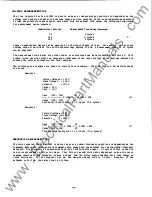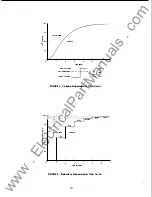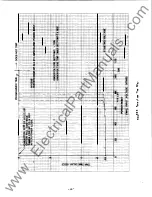
INTRODUCTION
Since the enactment of the National Energy Act of 1979 a large number of small private energy producers
have been planning and building small generation facilities in order to sell power to the local
utili ty_
Electric utilities across
the
country have been plaruling for intercormection of these small
generators,
and
have been working on solutions to the associated problems that interconnection creates.
Previously, the privately-owned sources of generation were typically large industrial plants with
multi-megawatt generators connected to the power system at a substation through a dedicated line. Many
of the new smaller sites (less than about
3
MW) are connected directly to the closest distribution
circuit. With this configuration, the p.:lrallel generator may now energize a distribution line after
the substation breaker or line recloser has opened. In some cases the smail generator could support
the load and operate as an isolated system.
Utility specifications for the safe interconnection of these small generators generally require voltage
and frequency relays that can detect when a line is isolated from the system. The PRIDE"Unit was
deSigned to provide a multifunction relay in one package that would supply the voltage
and
frequency
relaying required
to
prevent dangerous excursions in voltage or frequency.
In addition, the high-speed operation
and
processing power make the microprocessor-based PRIDE Relay
ideally suited for more complex programming of other protective relay functions. The PRIDE Unit,
therefore, is aWlicable as a general purpJse, multifunction protective relay.
A survey was conducted of the two hundred largest utili ties and of the IEEE Disper sed Storage and
Generation
�
Working Group concerning utility relaying policies relating to interconnection of
parallel generation. Upon completion of this survey, a second, more specific survey was taken of those
who responded to the first survey. The second survey included a preliminary specification for a relay
intended to satisfy many of the interconnection relaying requirements for small dispersed generators to
the utility grid. The results of the two surveys were formulated into a design specification for a
multifunction relay that would satisfy
many
of the = relaying requirements that al'P"ared to be common
among the various interconnection schemes and that would also be suitable as a general purpose
protective relay, with a different program
and
minor hardware changes, if required.
'1brough our research, the need for a single-phase and a three-phase relay became apparent. The single
phase relay needed to be low-cost due
to
the economics of small Single-phase installations. several
compromises in functional flexibility were made in the singl�phase design to meet
the
cost goals. The
three-phase relay was designed to obtain as much flexibility in application as possibl�
This manual describes the Single-Phase M-Q290 PRIDE Voltage
&
Frequency Relay only. A separate manual
gives a canplete description of the 'll:lree-Phase M-0296 PRIDE Voltage
&
Frequency Relay.
- 1 -
www
. ElectricalPartManuals
. com



























